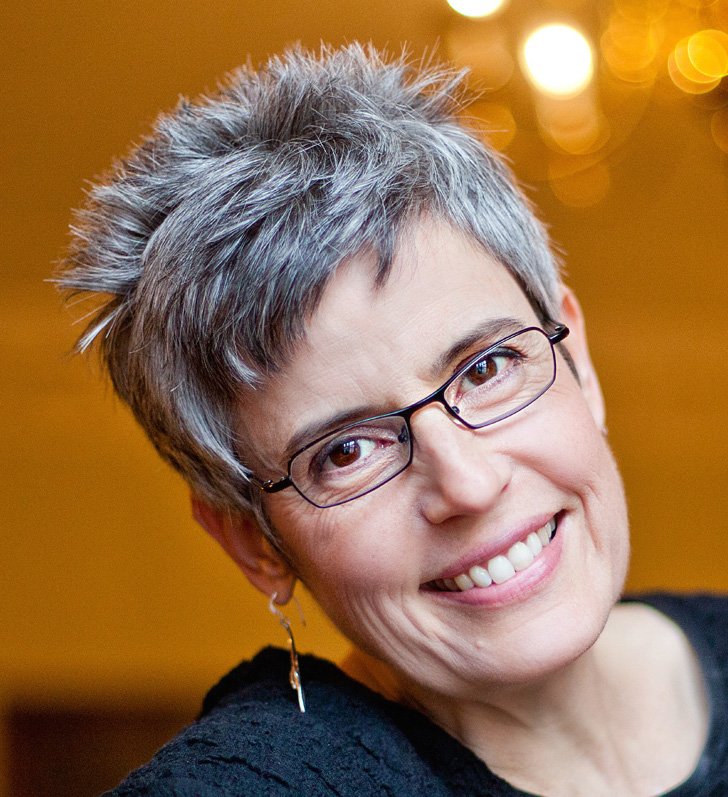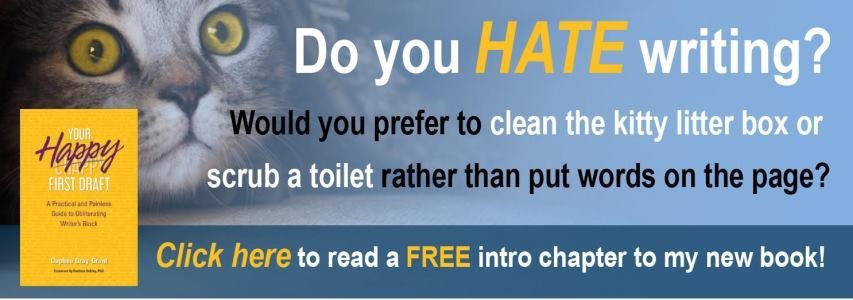Reading time: About 3 minutes
Emily Agnew says that using a timer is an essential part of her writing habit. Read this interview to learn the other strategies she employs….
Emily Agnew is a life coach for creative, sensitive people who suffer from anxiety, overwhelm, and self-doubt. She provides customized one-on-one intensives to clients around the world, using a combination of Focusing, Inner Bonding™ and self-regulating breath practices.
I was excited to talk to Emily about how she approaches writing.
Q: Roughly how much time do you spend writing every day?
At least 30 minutes, and sometimes 90 minutes or more, if I have some client reports or mentee reports to respond to. My writing “bread and butter” is the newsletter I publish twice a month, with a 1,700-word article. Those take me about four hours to write, from planning through publishing. I break that up into one “pomodoro” a day (25 minutes) on weekdays.
Q: What’s a simple activity or habit that makes you a better writer?
I always, always use a timer: that’s a key strategy for me. It keeps me focused and mindful as I write. Beyond that, taking time before I start writing to clarify my “angle”— the gist of what I plan to say — is an essential habit. Some people struggle with writer’s block. I have the opposite problem. I can write a lot of words quickly, but if I haven’t clarified where I’m going, I end up with such an unmanageable mass of words that I’m better off just starting over. I’ve learned the hard way to take my time getting enough clarity before I start. I’ll mind map my topic, too, if I need help getting things flowing.
Q: What interferes with your writing?
My biggest issue is falling into the trap of editing while I write. I’m a natural editor. In fact, I’m annoyingly incapable of NOT editing any piece of writing put in front of me (though when I’m reading fiction, that part of my brain seems to turn off, thank God.) I’ve tried typing in teeny-tiny font, or moving my mouse to the left side of my keyboard, or dictating into my phone. Each has advantages and disadvantages. I’ve improved significantly in this area but it’s still an ongoing project.
Q: How do you persuade yourself to sit down to write on days when you really, really DON’T feel like doing it?
It’s pretty unusual that I don’t feel like writing. Perhaps that is because I try to set myself up for success by writing my first draft between breakfast and lunch, when ideas flow most easily for me. I can edit anytime, so with editing, I just squeegee it in wherever it’s convenient. But for writing, morning is best. It’s true that with my newsletter articles, there’ve been a few times I found myself postponing getting started. In those cases, it usually turned out the topic I had chosen was too big, too limited, or its relevance had passed. As soon as I chose a new topic, I could settle in and write.
Q: Is there a particular motto or saying that you’ve found helpful for writing?
When I’m writing, I’ll pause sometimes and ask myself, “Is this true? Can I stand behind this?” On a more general level, I sometimes find myself worrying that what I’m saying in my articles is so obvious that my readers will feel insulted, even though this has never happened. (Or if it has, no one has told me!) When that fear comes up, I’ll remind myself that it never hurts to explain or explore something important again in a new way, and that I’ve gotten positive feedback from readers many times.
Q: Which stage of the writing process do you enjoy the most: researching, writing or editing/rewriting and why?
If I can restrain myself from editing while I write my first draft, then I enjoy the writing process very much. That’s a big “if.” Editing comes most naturally for me, and restraining that impulse is like trying to stop a dog from going after a squirrel. It’s easier for me to work with something that is already there: my brain sees immediately how things could be rearranged and improved. But truly, even though it can be challenging, I enjoy the whole process of writing and editing. It’s deeply satisfying for me to take concepts and ideas that have been in my mind and to find vivid, compelling ways to express them.
Q: What’s the best book you’ve read (either fiction or non) in the last five years?
A Gentleman in Moscow, by Amor Towles. I love that book. I think I’ve read or listened to it four times now, and my partner and I are reading it aloud for the third time as we speak. When I grow up, I want to be as funny and wise as Count Rostov. And as patient.
Q: What book are you reading right now?
I just finished reading Elena Ferrante’s Neapolitan Quartet of novels, which I found extraordinary. I’m also reading the From Russia to the West: The Musical Memoirs and Reminiscences of Nathan Milstein. Milstein was one of the most revered violinists of the 20th century, a truly exquisite player. He’s also a hilarious raconteur who, as far as I can tell, remembers everything that ever happened to him. Last but not least, I’m reading Thad Carhart’s lovely memoir, The Piano Shop on the Left Bank. He’s inspired me to think about playing the piano again. It was my first instrument before I became a professional oboist for many years. I loved playing the piano so much when I was a kid, and now that I’m not playing the oboe any more, I need other ways to make music.
Q: What do you think is the biggest misperception that new writers have about the act of writing?
That’s an interesting question. I’m guessing many new writers conflate writing with editing, and don’t realize the value of a “crappy first draft.” I certainly didn’t, before I met you and read your books, Daphne. Also, I remember thinking that either you are a good writer or you aren’t, and if you aren’t, there isn’t much you can do. What an epiphany to realize that you can practice becoming a better writer by learning more about the craft. That is one of the most satisfying ventures I’ve ever undertaken.
Q: Anything else you’d like to add?
No, except to say thank you for the opportunity to ponder these questions.
To learn more about Emily Agnew, you can visit her website, and subscribe to her twice-monthly newsletter.


